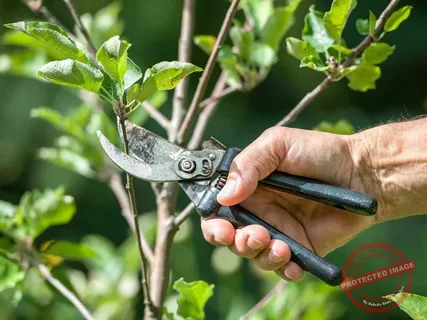When autumn rolls in, most of us think of cozy evenings, golden leaves, and that earthy smell after the first rain. But beneath that picture-perfect fall charm, there’s often something else brewing quietly in the grass — pests. Tiny, sneaky, and downright destructive, these critters can undo months of hard lawn work if you’re not paying attention. I’ve been there — watching a lush, green yard turn into patchy messes overnight. It’s heartbreaking, isn’t it?
Autumn is deceptive. The cool air tricks us into thinking the lawn’s safe. But pests love this weather. It’s the season when they burrow, breed, and build up strength for winter. The grass may grow slower, but under that fading green surface, a battle is going on. When I first started out, I used to think, “Well, at least I don’t have to mow as often.” Oh, how wrong I was. Fall is when vigilance matters most.
If you’ve ever walked out one morning and found strange holes, chewed blades, or brown patches spreading faster than you can water, you know what I mean.
20 Lawn Pests to Watch Out for This Autumn
This list of 20 lawn pests isn’t just here to scare you — it’s to help you spot trouble early and protect your yard before it’s too late. Some are common, others are sneaky, and one or two will make you want to start a full-on lawn renovation before winter hits. Ready to find out what might be hiding in your grass? Let’s dig in.
1. Grubs
Let’s start with the usual suspects. Grubs are the larvae of beetles, like Japanese beetles and June bugs. These little white, C-shaped worms live right under your turf and feast on grass roots. You’ll notice the damage when sections of your lawn feel spongy or peel up like a carpet. The best fix? Milky spore or nematodes. I prefer natural solutions — they work quietly and keep your soil healthy.
2. Chinch Bugs
These guys love warm spots in your lawn. They suck the juices right out of your grass blades, leaving behind dry, dead patches that look like drought damage. If your lawn’s sunny and compacted, chinch bugs might feel right at home. Regular aeration and watering go a long way to keep them away.
3. Armyworms
Armyworms move in packs, eating everything green in sight. One morning your lawn’s fine; by the next, it looks like a freshly mowed hayfield. Keep an eye out for brownish caterpillars with stripes. If you see birds flocking to your yard suddenly, they might be feasting on these little soldiers — a natural warning sign.
4. Sod Webworms
These pests hide in silken tunnels just above the soil. They chew grass blades at night and vanish by morning. If you spot small brown moths flying over your lawn at dusk, that’s a big clue. I learned the hard way one year — thought my mower was too low until I found webworms had been snacking all season.
5. Cutworms
Cutworms are night feeders too, slicing off young shoots at the base. They love freshly seeded lawns and tender grass varieties. You can use a simple trick: place a piece of cardboard overnight, then check under it in the morning — if you find wriggly culprits, you’ve got cutworms.
6. Mole Crickets
They tunnel under your lawn, uprooting grass and leaving soft, uneven patches. If your soil feels bumpy or hollow, dig a little. You might find one of these creepy crawlers staring back. Watering deeply but less often discourages them, as they prefer soft, constantly moist soil.
7. Leatherjackets
These are crane fly larvae — grayish, wormlike pests that chew on grass roots. They’re most active in damp conditions, especially after a rainy fall. Birds love them, so if you see crows or starlings pecking persistently at your lawn, it might be time to investigate.
8. Billbugs
Billbugs are sneaky. They start as beetles that chew stems, but their larvae cause real damage underground. Look for wilted patches and sawdust-like droppings at the base of grass blades. Proper mowing height and fertilization can help the grass recover.
9. Ants
Ants aren’t always destructive, but they can disturb root zones and cause soil mounding that affects your lawn’s smoothness. Fire ants, though, can sting and spread fast. If you see irregular mounds, pour boiling water into them or use a natural bait. Keep it simple and steady.
10. Earthworms (in excess)
Now, I love earthworms — they’re usually heroes in the garden. But in huge numbers, they can leave castings that make mowing uneven. Balance is key. A few is good, too many means your soil might be too rich or moist.
11. Moles
They’re cute in cartoons but terrible for lawns. They dig tunnels searching for grubs and worms, leaving ridges and mounds behind. Reducing grub populations often sends them packing. No grubs, no moles — simple as that.
12. Voles
Unlike moles, voles eat roots and stems directly. You’ll notice narrow surface runways and gnawed stems, especially near mulch or garden edges. Keeping your lawn trimmed short discourages them. Cats also help — just saying.
13. Carpet Beetles
Most folks know carpet beetles for invading homes, but their larvae can also be found outdoors in lawns or near compost piles. Watch out for tiny, fuzzy larvae near thatch layers. And yes, those carpet beetles eggs you sometimes see in hidden corners indoors? They often start life right outside in your grass.
14. Spittlebugs
Ever seen foamy blobs on your grass blades? That’s a spittlebug’s hiding spot. They suck sap but don’t usually cause severe damage — still, large infestations can stunt growth. A strong spray of water knocks them off easily.
15. Crane Flies
Adult crane flies look harmless, like giant mosquitoes, but their larvae (leatherjackets again) chew through roots in fall. Keep lawns aerated and well-drained. Wet, compacted soil invites them in like it’s a cozy motel.
16. Whiteflies
Whiteflies are more common in warmer areas but can still make a surprise visit in mild autumns. They suck juices from grass blades and leave behind sticky honeydew that encourages mold. Keeping grass trimmed and dry deters them.
17. Root Maggots
If your turf starts wilting for no visible reason, dig down. You might find tiny white maggots feeding on roots. These pests thrive in soggy soil, so watch your watering schedule — less is more.
18. Fleas and Ticks
Fall lawns can become tick and flea playgrounds, especially if you’ve got pets. They hide in thick grass and leaf litter, waiting for a warm host. Rake up fallen leaves, mow regularly, and spread diatomaceous earth if needed.
19. Nematodes
Not all nematodes are bad, but some kinds attack grass roots and weaken growth. Symptoms include patchy yellow areas that don’t respond to fertilizer. The best fix? Aerate the soil and apply organic compost to rebuild microbial balance.
20. Mites
Spider mites love dry conditions and can suck color right out of grass blades. You’ll see stippling or faded areas. Watering correctly and keeping dust down helps prevent them from multiplying.
How to Identify Lawn Pest Damage
When your lawn starts looking off, don’t panic. Try this: pull gently on a few brown blades. If they lift easily, pests might have chewed the roots. If not, maybe it’s a watering or nutrient issue. Always check under the turf for movement or soil softness — that’s where most trouble starts.
Natural Ways to Control Lawn Pests
I’ve found the most lasting solutions come from working with nature, not against it. Beneficial nematodes, neem oil, and even soap sprays can control many of these pests without harsh chemicals. Birds, frogs, and ladybugs are also part of your pest patrol — invite them in.
If your lawn struggles year after year, think about a full lawn renovation. Sometimes the soil is so tired that pests keep coming back because they know it’s easy pickings. Aerating, reseeding, and laying down perennial fabric under trouble spots can help rebuild your turf’s strength from the ground up.
FAQs
Q: How can I tell the difference between pest damage and drought stress?
A: Pest damage often has irregular patches with visible feeding signs, while drought stress looks more uniform. Dig down — pests usually hide just below the surface.
Q: Are chemical treatments safe for pets and kids?
A: Some are, but always check the label. I personally lean toward organic solutions because I like my chickens, dogs, and soil life to stay happy.
Q: Can I prevent pests completely?
A: Not really. The goal is to keep your lawn healthy enough to resist serious infestations. Balanced soil, good drainage, and regular mowing work wonders.
Autumn can test your patience as a grower. You think you’ve done everything right, then the pests show up uninvited. But remember — every gardener has been there. With awareness and a little persistence, your lawn will bounce back greener and tougher. The key is consistency, not perfection.
So, as the leaves start to fall and the air cools, take a stroll across your yard. Look close, listen, and feel the soil under your boots. Does it seem alive and thriving… or asking for a little help this season?



